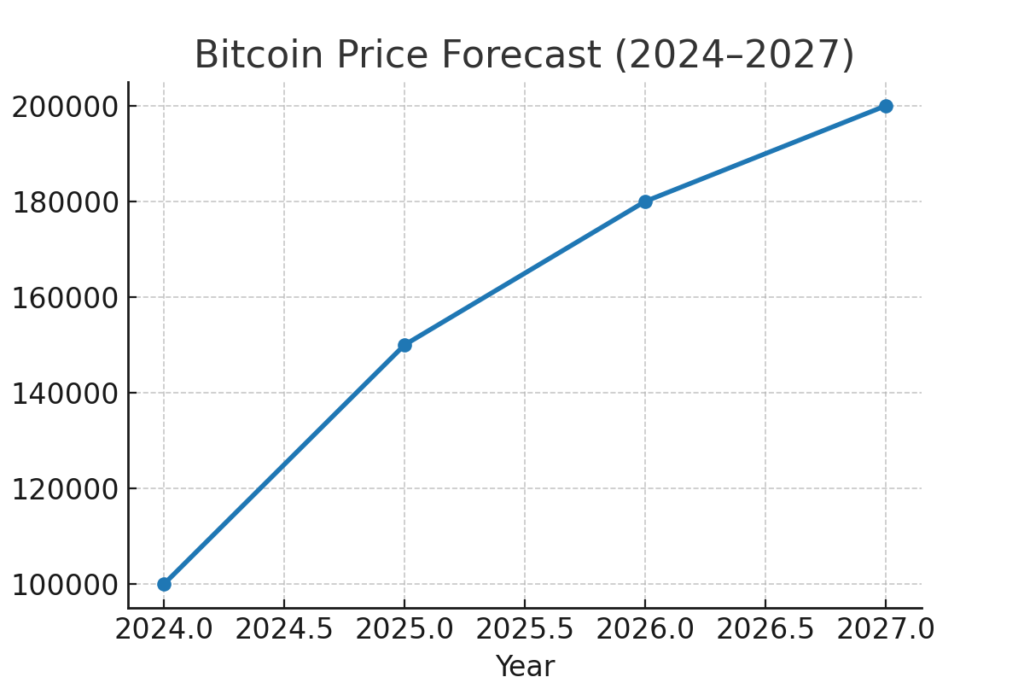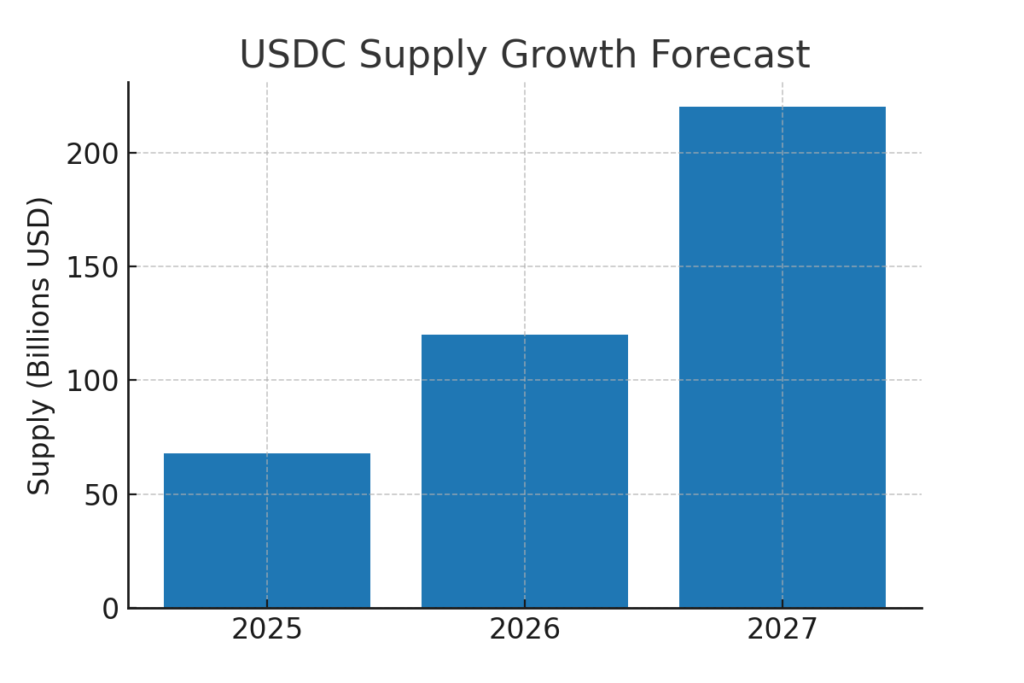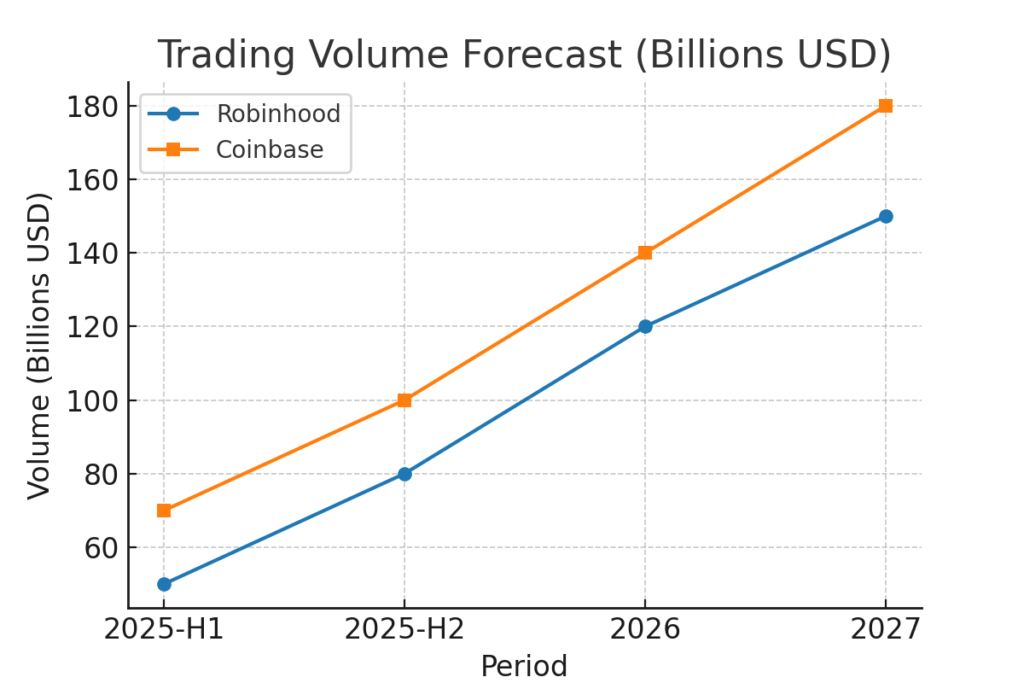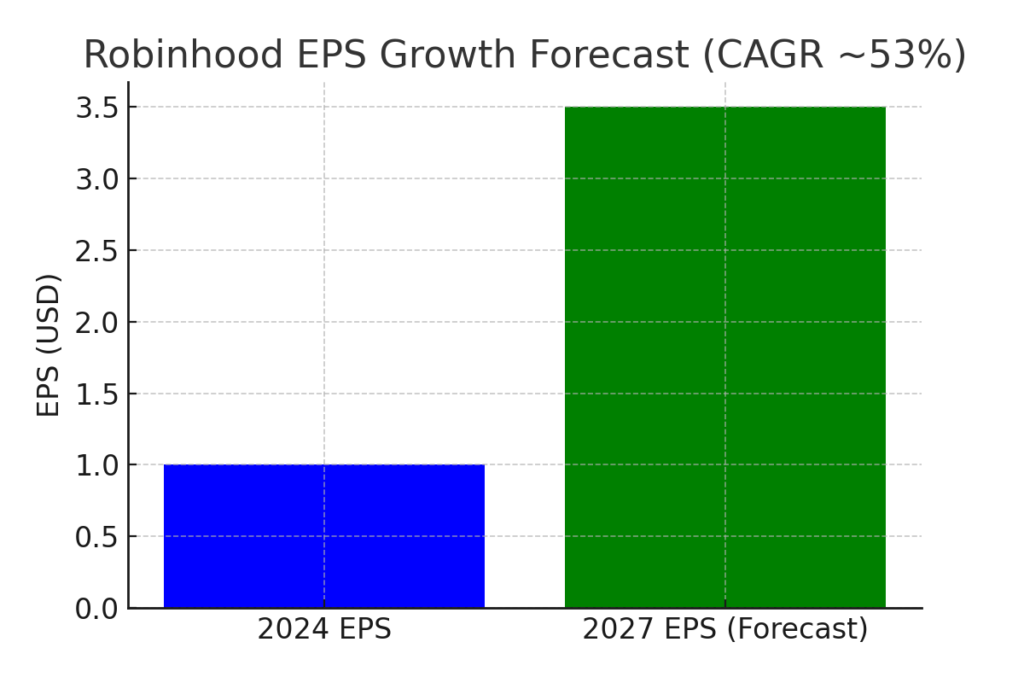
Key Takeaways:
- Cycle extension: Bernstein projects the crypto bull market could run until 2027, not peaking in 2025–26 as many expected.
- BTC path: Bitcoin $150,000–$200,000 in the next 6–12 months as momentum broadens to ETH, SOL, and DeFi.
- Winners: Robinhood (HOOD) target raised to $160 (from $105), Coinbase (COIN) to benefit from derivatives, and Circle (CRCL) from a surging USDC supply.
- Stablecoin scale-up: USDC projected to expand to ~$173B by 2027 (with ~$99B in 2026).
- Volumes & macro: Trading volumes seen surging into 2026 and peaking in 2027 amid easing policy and improving clarity.
The Setup: A Longer, “Exhausting” Bull Cycle
Bernstein’s latest note argues that crypto’s current upswing has structural support—policy tailwinds, institutional flows, and a matured on-chain stack—stretching the rally into 2027. The call explicitly breaks from the familiar four-year halving rhythm, implying a multi-year demand cycle that transcends reflexive retail waves.
Bitcoin’s Bold Path ($150k–$200k)
The headline: BTC $150,000–$200,000 within 6–12 months. In Bernstein’s framing, higher-beta phases follow as capital rotates to ETH/SOL/DeFi, while on-chain yield and staking pull in treasury-style allocators who now see programmable returns—not just store-of-value scarcity.
Figure 1: Illustrative path from ~$100k to a $150k–$200k band through 2027 (conceptual visualization aligned to Bernstein’s range).

Stablecoins: The Liquidity Backbone
Bernstein’s thesis puts stablecoins at center stage. USDC—key to fiat bridges, DeFi collateral, and settlement rails—is modeled to expand to ~$173B by 2027 (with an interim ~$99B in 2026). That scale compounds liquidity, tightens spreads, and deepens derivatives order books—flywheels that typically favor exchange equities and market infrastructure.
Figure 2: Conceptual USDC float expansion toward ~$173B by 2027.

Volumes, Derivatives, and Market Depth
Bernstein expects trading volumes to surge into 2026 and peak in 2027, with momentum already visible at Robinhood and Coinbase. A more robust perpetual futures stack and better risk transfer drives higher turnover per dollar of AUM than spot-only cycles. Figure 3: Conceptual path for monthly turnover as crypto penetration widens and derivatives deepen market depth.

The Equity Angle: HOOD, COIN, CRCL
Robinhood (HOOD). Bernstein raised target to $160 (from $105) and projects ~53% EPS CAGR through 2027, leaning on a diversified engine (equities/options/crypto), improved unit economics, and the crypto upswing.
Figure 4: Conceptual EPS trajectory consistent with a ~53% CAGR through 2027.

Coinbase (COIN). Derivatives (perps/futures), custody, and on-chain services position COIN as volume-levered and fee-resilient as the alt/DeFi leg develops.
Circle (CRCL). The USDC ramp underpins payment/treasury/settlement demand; recent public-market performance is volatile, but scale effects are clear as stablecoin rails spread. (Recent coverage has called out valuation risks—even as structural demand holds.)
Catalysts and Risks to Watch
- Policy path: Incremental clarity unlocks institutional mandates; any reversal could slow inflows.
- Funding costs: Rate easing into late-2025 makes staking/yield more relatively attractive vs. cash.
- Market plumbing: Derivatives/liquidity access expanding (U.S. & offshore venues); outages or rule shocks would be downside.
- Stablecoin competition: USDC growth vs. rivals (e.g., USDT) will shape fee pools and on-chain spread capture.
- IPO window: Crypto listings (exchanges/infra) signal capital-markets confidence but can also mark local exuberance—track breadth, not just first-day pops.
Practical Playbook (Investors & Builders)
- Core BTC exposure for the “$150k–$200k” window; consider covered calls to harvest vol if sizing is already full.
- ETH/SOL beta via spot plus staking (enterprise-grade, audited providers) and L2/validator exposure where feasible.
- DeFi yield: Favor delta-minimized strategies (e.g., on-chain T-Bill wrappers, secured lending) over complex basis trades unless you have risk ops.
- Exchange equities: HOOD/COIN as volume & derivatives leverage; respect single-name risk.
- Stablecoin rails: Track USDC growth; it is a barometer for payments/treasury demand and DeFi liquidity.
Bottom Line
Bernstein’s 2027 timeline reframes this as a durable adoption cycle rather than a short, euphoric run. If BTC reaches the $150k–$200k band and capital rotates into ETH/SOL/DeFi, then equities levered to volumes, derivatives, and stablecoin float stand to benefit. Execution and risk control matter, but the plumbing is deeper and demand is broader than prior cycles—exactly the ingredients for a longer bull market.

